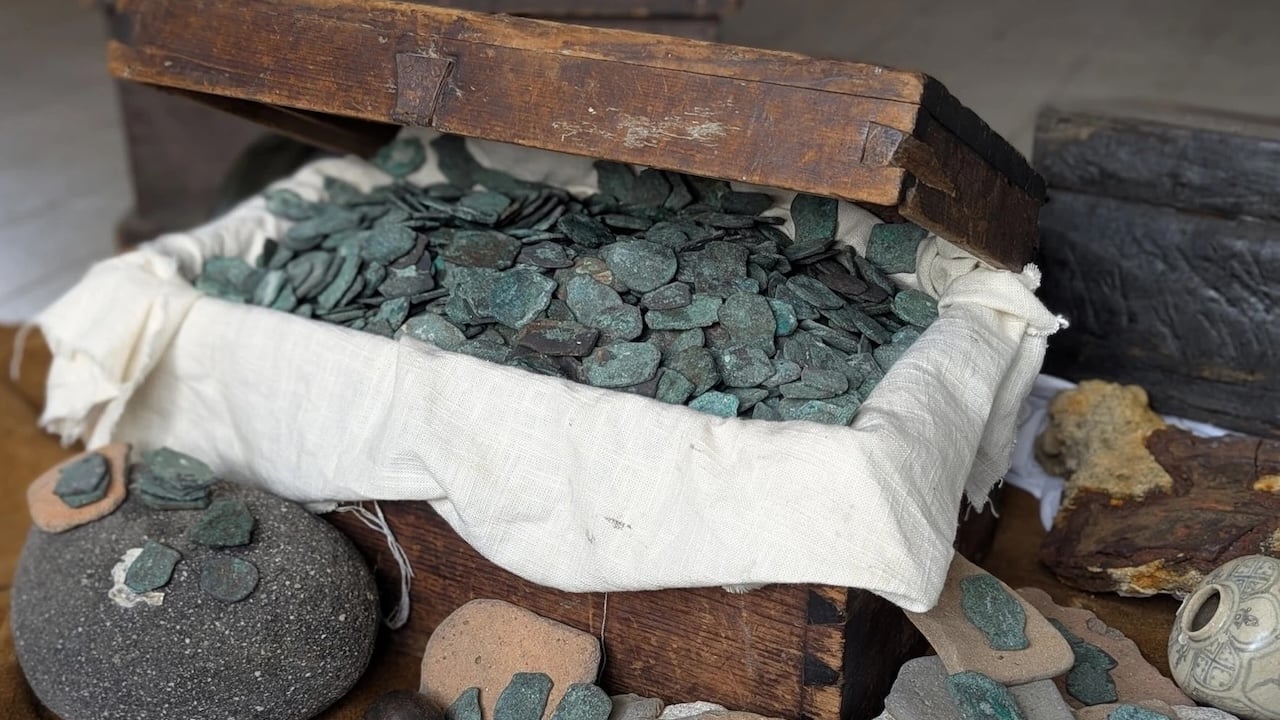(Mike Maharrey, Money Metals News Service) You may not think of the gold and silver bars and coins we sell at Money Metals as “treasure,” but if you put some in a chest and sink it in the ocean, that’s exactly what it would be!
A salvage company recently pulled over 1,000 silver coins, 5 gold coins, and other gold artifacts out of the Atlantic Ocean off the coast of Florida, valued at over $1 million.
Now, imagine if somebody 300 years from now found a chest full of dollars in the ocean. Would that be called “treasure?” Probably not. More than likely, they would call it a soggy, rotten mess! And even if the paper money survived, what would it be worth? Given the rapid depreciation of the dollar, not much.
And therein lies one of the key differences between the fiat money of today and the hard money of the past. Real money lasts, and it holds its value, not just over years, but for centuries.
The Spanish coins recovered by Capt. Levin Shavers and the crew of the salvage ship M/V Just Right were part of a treasure trove carried by what is known as the 1715 Fleet.
As the fleet of 12 ships got caught in a hurricane on July 31, 1715, sending all but one to the bottom of the ocean, along with an estimated $400 million worth of gold, silver, and jewels. Historians estimate that around 1,000 people drowned.
The only surviving ship was the Griffon, a French vessel traveling with the fleet for protection.
The shipwreck and loss of treasure were a significant blow to Spanish financial power. The money was earmarked to fund Spain’s European wars.
The silver coins recovered this summer are Spanish reales minted in Spanish colonies, including Mexico, Peru, and Bolivia. They are reportedly in fantastic condition, still bearing visible dates and mint marks.
Reales were minted in various denominations, including ½, 1, 2, 4, and 8 reales. According to a press release, the reales recovered over the summer were the largest denomination, often referred to as “pieces of eight.”
Each coin contains just under 1 ounce of silver. That means the melt value of the silver alone is nearly $48,000.
Of course, their historical significance makes them even more valuable. Queens Jewels (the salvage company) director of operations, Sal Guttuso, called each coin “a piece of history, a tangible link to the people who lived, worked, and sailed during the Golden Age of the Spanish Empire.”
“Finding 1,000 of them in a single recovery is both rare and extraordinary.”
According to the press release, “The condition of the coins suggests they were part of a single chest or shipment that spilled when the ship broke apart in the hurricane’s fury.”
The gold coins were escudos, more commonly referred to as doubloons. Like the real, escudos came in various denominations, with the 8-escudos coin being the largest. It was made from just under one ounce of 21-karat gold.
The melt value of the five escudos would be around $15,400 at the current gold price.
Some of the coins will be displayed at local museums.
The shipwrecks were discovered along Florida’s Treasure Coast, encompassing an area off the coast of Indian River, St. Lucie, and Martin counties. It is known for its abundance of shipwrecks and the large amounts of treasure discovered in the area.
Photo courtesy of Crown Jewels LLC.
Mike Maharrey is a journalist and market analyst for Money Metals with over a decade of experience in precious metals. He holds a BS in accounting from the University of Kentucky and a BA in journalism from the University of South Florida.

